Historic Warrandyte Architectural Walk (Warrandyte)

This 2.7 km walk is off the beaten track, following the legacy of two female Warrandyte builders and a local stonemason. Once the short hill is climbed you will find yourself walking amongst enchanting homes and flowering gums before dropping down to Warrandyte Walk.
The devastation wrought by the 1939 bushfire, shortly followed by the Second World War, left Warrandyte lacking in building personnel. Alexa Goyder and Myrtle Houston found a niche for their unique talents during this era. Today, they are remembered for contributing to the 'Warrandyte style' during a time when few women were engaged in building work and materials were in short supply.
They hand built their houses using second hand leadlight windows, rough sawn timbers and masonry, often with local sandstone laid in the 'random rubble' style by Kevin Sloan who is also remembered on the walk.
Start and finish in Warrandyte central, near the Mechanics' Institute, corner Yarra Street and Mitchell Avenue, Warrandyte.
Map of Route
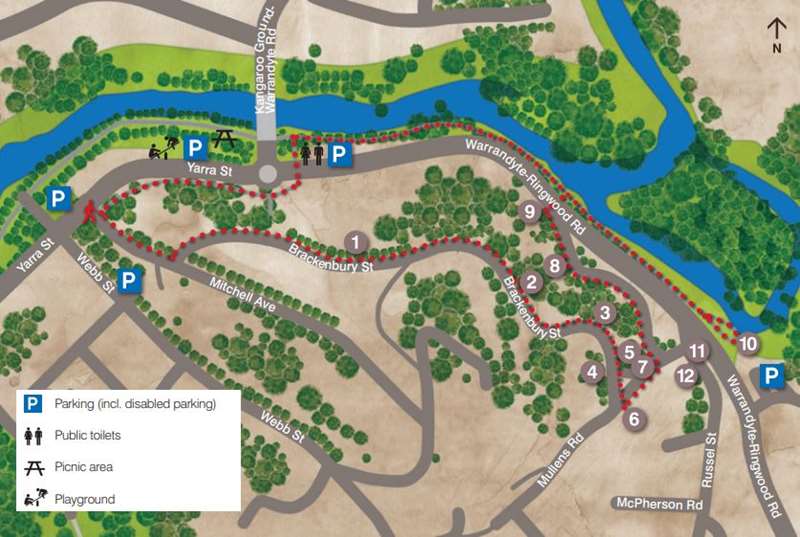
Route Description
Your walk begins at the Mechanics' Institute on the corner of Mitchell and Yarra street. Play the soundpost stories about former hotels, pubs and dances.
Walk up Mitchell Avenue to the first road on the left. This is Brackenbury Street.
1. 119-139 Brackenbury Street
Find a suitable place along this stretch of road with a view through the trees to the hillside beyond. On Friday 13 January 1939, a large and fast moving fire swept through Warrandyte. The fire came from the distant side of the Yarra River, sweeping down and across the narrow valley before roaring up this hillside to where you stand today; 168 homes were lost, including some built by Alexa Goyder.
Although not visible from the road, number 119 was owned by Kevin Sloan. Its solid little garage of hand made cement blocks shows how locals responded to a shortage in building materials following the 1939 fire.
2. 151 Brackenbury Street
Alexa bought this property in 1934 and built the house 11 years later. It nestles into the hillside with stone retaining walls, an important feature with Alexa's designs. The house features recycled leadlight windows and native timber 'board and batten' walls. The recent additions are in sympathy with her original concept.
3. 161 Brackenbury Street
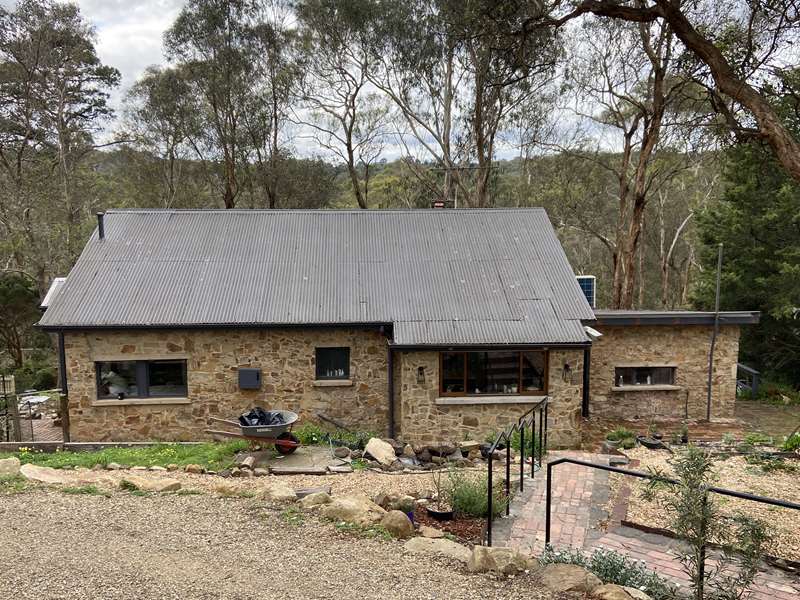
The process of building in stone is thousands of years old. Alexa and Myrtle Housten both loved how irregular shaped stones formed an artistic effect when closely fitted together. This style became known as 'random rubble'. Myrtle built this house in 1940, in the local brown colour sandstone from Warrandyte. You can see the random rubble effect in the walls.
Building in this style is a bit like building a stone jigsaw puzzle. It is slow work and requires a sculptor's eye for the effect created by the shapes. You will notice random rubble used throughout Warrandyte; in walls, garden steps and terraces, monuments and footpaths.
4. 152 Brackenbury Street
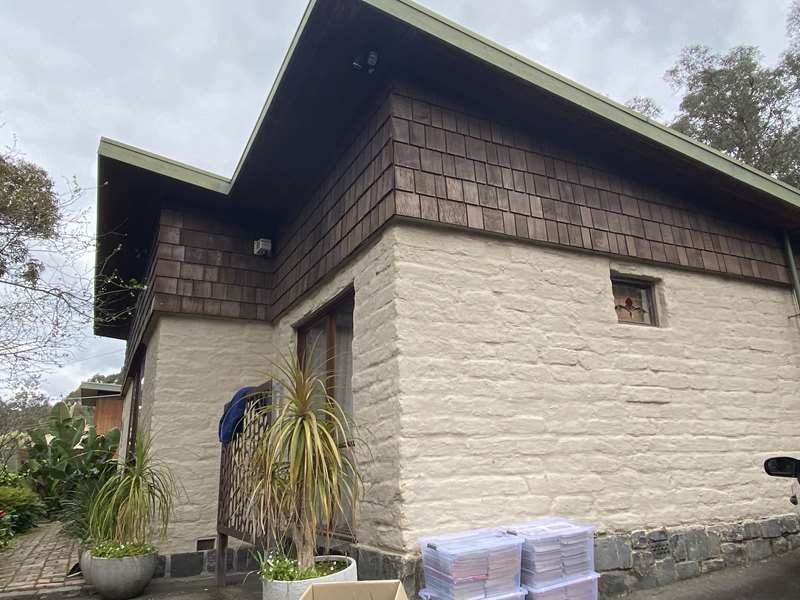
Further along the road on your right is a delightful adobe mudbrick house built in 1960 with an enviable view. Neither Alexa nor Myrtle built this home, but we feature it because of its early use of adobe, a form of mudbrick that is strengthened with straw or other fibrous material.
This ancient building method was frowned upon by the local authorities and the home very nearly did not get building approval. Today, it remains as one of only a few adobe homes in the greater Melbourne area. Note the quaint use of wooden shingles across the upper part of the walls, and bluestone for the foundation.
5. 165 Brackenbury Street
With help from Alexa, Myrtle built this low pavilion style home soon after the 1939 fires. She used Mt Gambier limestone (now painted over) as an economical fireproof walling.
You are now at the end of Brackenbury Street. Keep walking forward to cross Mullens Road. This will bring you in front of a rare and special feature of Warrandyte's heritage.
6. 32 Mullens Road
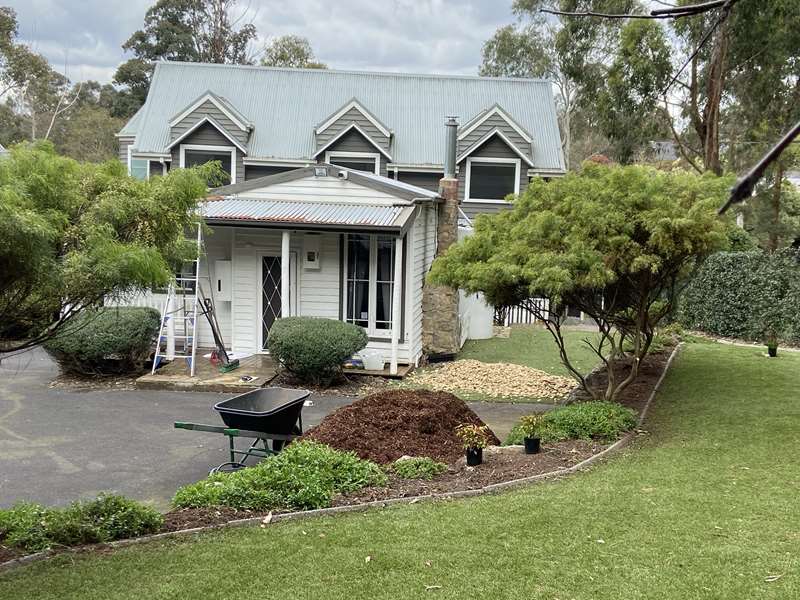
The building of interest is the small cottage in front of the main residence. French sailor Joe Doutta built the cottage after jumping ship to seek his fortune in Warrandyte's 'hills of gold'. The original wattle and daub walls are hidden behind weatherboards. Alexa Goyder built the free standing random rubble chimney to replace an earlier metal chimney. The sturdy little house has survived all fires.
Walk down Mullens Road and turn left into the Yarra Street Service Road.
7. 318 Yarra Street
This is the front view of the limestone house at 165 Brackenbury Street, built by Myrtle. Note the recycled steel windows. Whelan the Wrecker was a great source of second-hand materials for the 'Warrandyte Style' builders.
8. 'Riversong', 306 Yarra Street
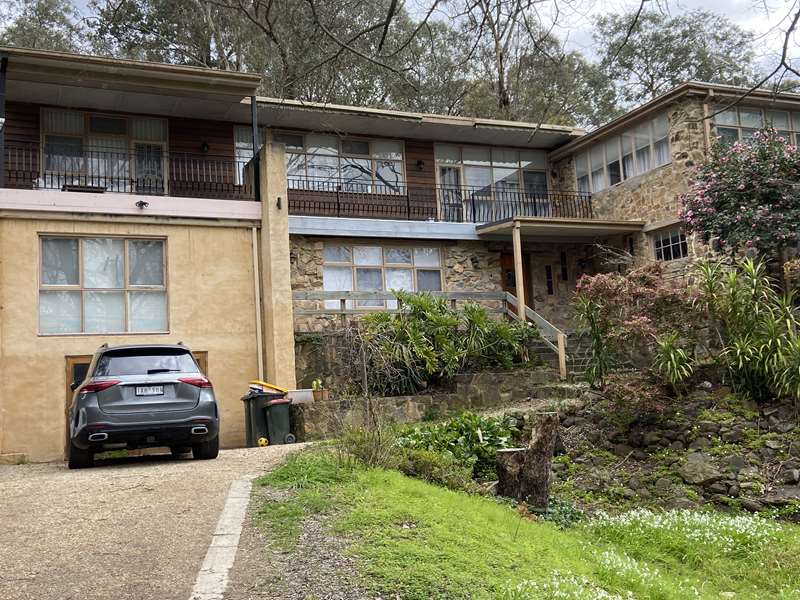
Part of this commanding two storey light filled home was partly built by Alexa with characteristic random rubble walls. She owned this allotment in 1935.
9. Sonnetswood, 300 Yarra Street
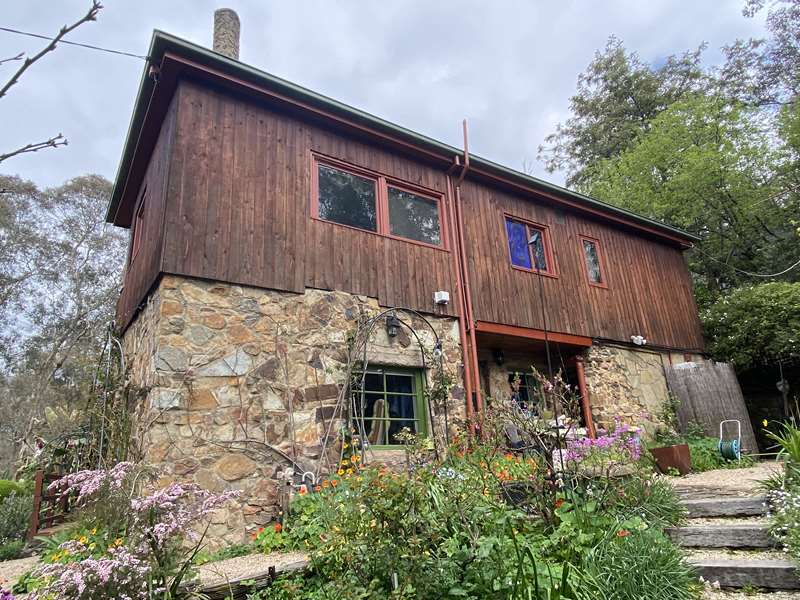
This home is a magnificent example of Alexa at her finest. It was designed and built by herself, for herself. It was partially burnt by the 1939 fires, but she rebuilt. The home features the work of stonemason Kevin Sloan.
Walk back along the short stretch of Yarra Street Service Road to Mullens Road. Cross Yarra Street to stand in front of the Historic Stonehouse and Pottery Cafe.
10. Random Rubble
The Historic Stonehouse and Pottery Cafe features random rubble construction, allowing you to appreciate the skill up close. Note the warmth that emanates from the local sandstone. There is a soundpost here where you can listen to stories about the Stonehouse, the Caledonia Mine and Warrandyte's famous potters.
Look back across the street for a view of two grand old cottages.
11. 322 Yarra Street
This simple, very intact cottage with original six-paned windows has withstood all fires, floods and damage by 'renovation'. Local gold miner William Hastings built it in 1873 and for the next 120 years his descendents lived here. Like most houses of the era it was originally just three rooms. Today, it is classified by the National Trust of Australia.
12. 2 Russell Road
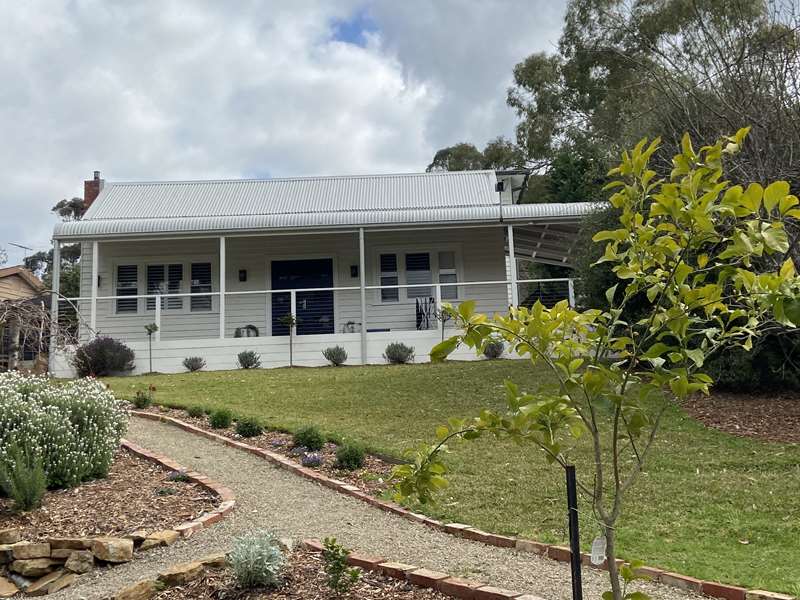
To your left of 322 Yarra Street is another original Warrandyte cottage dating back to the 1890s. It was purchased by Alexa in 1934, but was partly destroyed in the 1939 fire and rebuilt. Although altered, it still retains its original charm in a delightful location.
Find the Warrandyte Riverside walk, next to the Stonehouse. This will take you back to Warrandyte Village. Cross Yarra Street at the roundabout.
13. Warrandyte War Memorial
The memorial was constructed in 1922 to commemorate those who fought in the First World War. The terraced gardens, radiating stone pathways and the obelisk centrepiece feature local sandstone and stonemasonry by Kevin Sloan.
Your walk concludes at the Mechanics' Institute. This finishes your walk. Time to relax and plan your next adventure.
Photos:
Location
181 Yarra Street, Warrandyte 3113 View Map
Web Links
→ Historic Warrandyte Architectural Walk Guide and Map (PDF)








